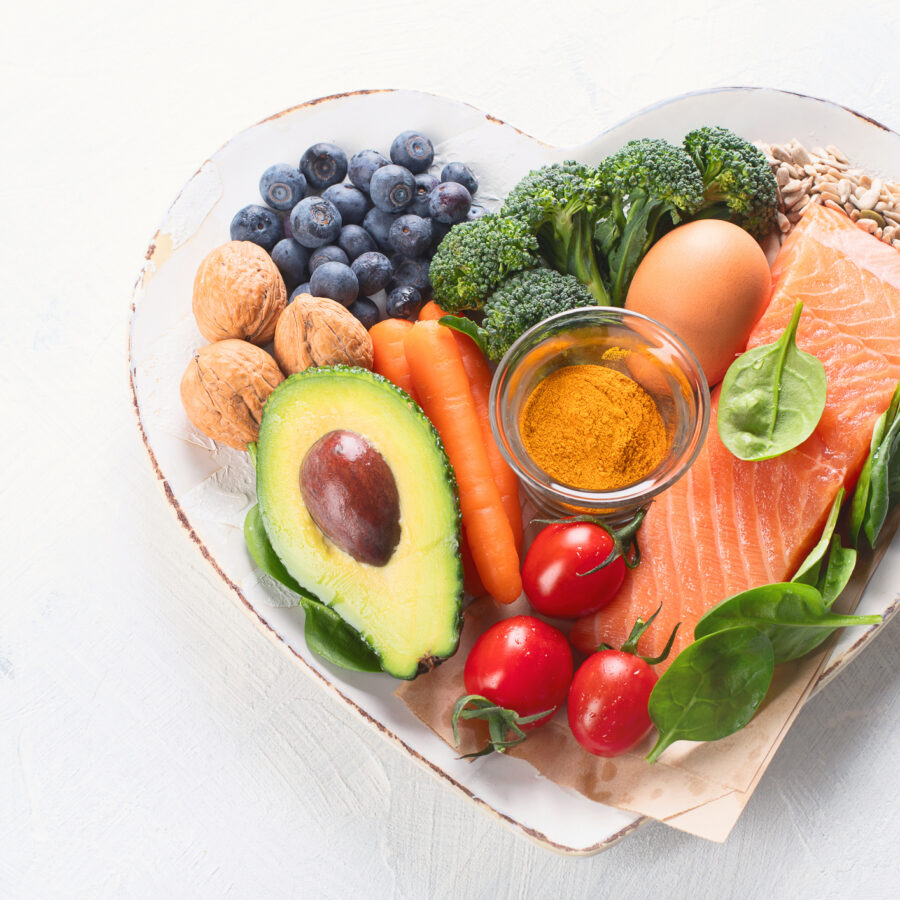“Renewal” is a word often associated with spring, when open windows, warmth, sunlight and plants make their comeback. The foods produced during the season are at the peak of their nutritional value, which makes them not only a good source of nutrition for seniors, but for people at any age! Read on for nutrition tips for seniors to start spring off on a healthy foot!
What is a Well-Balanced Diet?
As an aging adult, satisfying your nutritional needs helps you maintain the energy and strength to live your life to the fullest. Fortunately, there are several resources on nutrition for seniors to guide you on your way to a healthy life.
MyPlate offers a visual reference of the types and amounts of nutritious food you should be consuming on a regular basis. The MyPlate food groups include whole fruits, a variety of vegetables, whole grains, and low-fat or fat-free dairy foods, and visually displays the proportions in which you should be eating them. A plate filled with these portions of fruits, vegetables, whole grains, and lean proteins like chicken or fish makes for a very healthy meal.
It also provides information on the unique nutritional needs for ages 60 and above. To improve their nutrition, focus on the following:
- Eating from a variety of food groups to help reduce the risk of developing chronic diseases, like high blood pressure, diabetes and heart disease.
- Getting enough protein throughout the day to maintain muscle mass.
- Focusing on nutrients like potassium, vitamin D, dietary fiber and vitamin B12.
- Drinking water frequently, and consuming low- or fat-free milk, or fortified soy beverages and 100-percent juices to supplement fluid intake.
Top Superfoods for Seniors
Superfoods have more nutrients, vitamins, minerals and antioxidants than non-superfoods. As you age, the following superfoods can provide missing nutrients in your diet, prevent certain medical issues, and improve overall nutrition in seniors.
Artichokes. Rich in magnesium and antioxidants, artichokes help build bones and boost immunity. Magnesium helps regulate high blood pressure.
Leeks. Onions, garlic, and leeks are rich in phytochemicals, which can fight off threats to your health, and vitamins C and B.
Asparagus. This green vegetable is a great source for vitamins A, C, E, and K.
Watercress. Watercress increases the ability of cells to resist damage that can lead to cancer. It is also rich in vitamins A, B, and E.
Green peas. One cup of peas has more protein than a hard-boiled egg. They are heart healthy, and have plenty of vitamin K to help fight osteoporosis, as well as vitamins A, B1, B6, and C.
In-Season for Spring
It’s always recommended to buy fruits and vegetables in season. That’s when they typically have the best flavor. You will find these fruits and vegetables in the market during the spring season:
- Artichokes
- Asparagus
- Carrots
- Fava beans
- Fiddleheads
- Morels
- Pea greens
- Snap peas, snow peas, and pea pods
- Apricots
- Cherries
- Cilantro (in cool climates)
- Valencia oranges
- Radicchio
- Rhubarb
- Spring onions
- Strawberries
- Sweet onions
- New potatoes
Some of your best sources for fresh fruits and vegetables are farmers markets, or orchards, where you pick your own produce. The National Farmers Market Directory can help you find a farmers’ market near you.
Freshness Tips
Wherever you shop for food, here are a few nutrition tips for seniors to help assure the foods you buy are of the highest quality and freshness.
Smell the produce. Fruit with a sweet smell to it indicates ripeness.
Check the skin of the fruit or vegetable. The produce should be firm to your touch, but not so firm that it doesn’t move when you press your finger gently. Avoid produce that has marks, bruises, dents, wrinkles or soft spots.
Bell peppers should be firm and void of any soft spots. Look for consistent color along its entire surface, and avoid any with split or broken stems.
Peppers, zucchini, and cucumbers should feel firm, not rubbery.
Tomatoes, mushrooms, and head lettuce will have a slight springiness when fresh.
Sweet potatoes and onions will have a more solid feeling.
Cauliflower and broccoli. Color is an indicator of freshness. Broccoli should be pale green and cauliflower off-white, without yellowing or browning.
Root vegetables. Carrots, beets, potatoes and onions should be hard to the touch and free of cracking or soft spots.
Leafy greens. Assess as many layers of the greens as possible. The leaves and stalks of kale, lettuce, and cabbage should be crisp without wilting or browning. Avoid greens with tears that are beginning to brown.
At the grocery store, the freshest fruits and vegetables are often found on the back of the shelf, with older produce placed in front.
Pre-cut fruit may save you food-prep time, but fruit that’s been cut and packaged for retail sale is exposed to oxygen, light and possibly heat. Any of these elements can affect the fruit’s vitamin content, and will cause deterioration more quickly than whole fruits.
A slimy or mushy consistency to the touch indicates a total lack of freshness in all types of produce.
With these tips, your shopping bag will be full of delicious and vibrant produce this season!
For more nutrition tips for seniors, visit Bethesda’s Health & Wellness blog.
Want to find out more?
If you’d like to stay up to date with Bethesda Health Group, sign up here to receive our blog and newsletters!
"*" indicates required fields
Related Articles
Want to find out more?
If you’d like to stay up to date with Bethesda Health Group, sign up here to receive our blog and newsletters!
"*" indicates required fields



